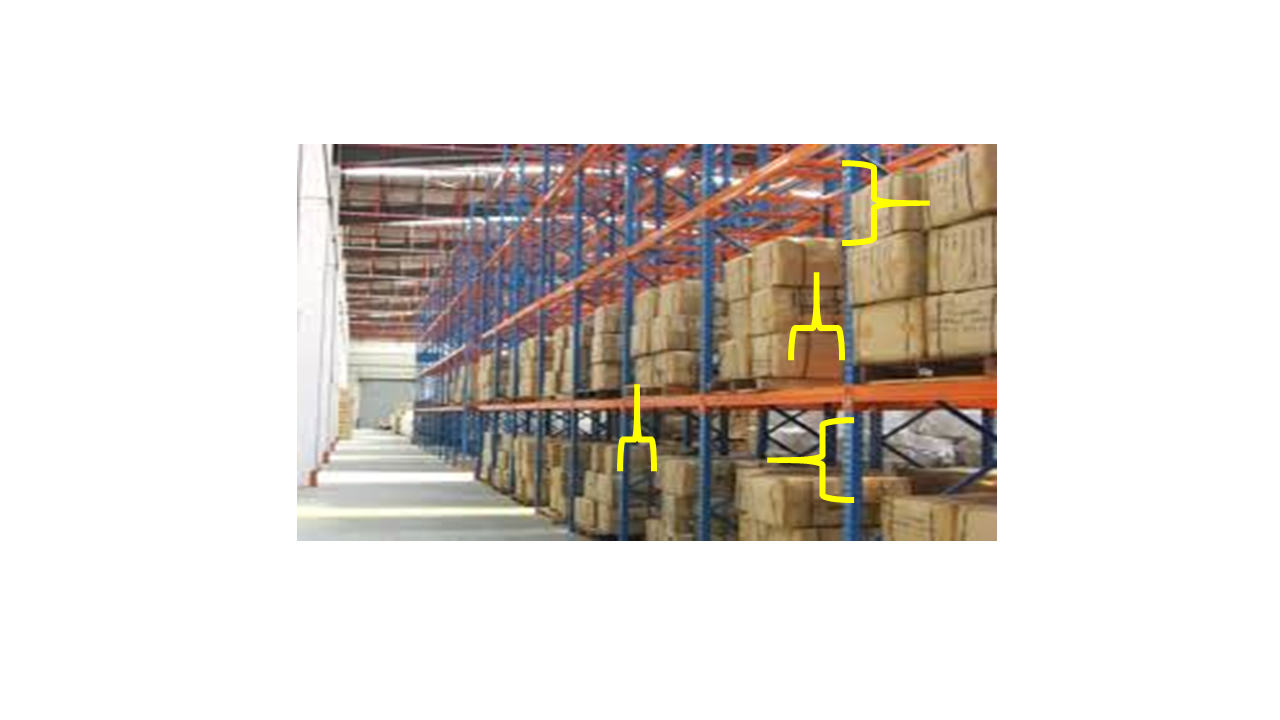Two factors in play in the Southern California commerce market right now
- Warehouse space is at an all-time premium
- Coronavirus requires a re-examination of demand.
Companies need to rethink how much and where they are investing in inventory, which relates to both factors. There is a systematic way to go about this.
A. Eliminate non-inventory, sub-optimal racking
Non-inventory
Most warehouses are 10% of more consumed by non-inventory items, e.g. old machines, office furniture, finance files. As the square foot cost of warehouse space goes up, there are likely more cost-effective ways to store these, including purging them.
Suboptimal racking
Many racks are more than 1/3 air because they are a uniform height at all levels, which can be much higher than the typical pallet needs. Yes, clearance is required for entry and exit, but inches not feet Also, the widths are much wider than the 48” needed to fit most 40” wide pallets.
Ask yourself a couple of questions.
- If you are using two pallets across in the racks, do you have them 9’ and 10’ wide, when 8’ if the minimum?
- Is the same height used at each level in the racks, no matter high the product is?
B. Identify candidates in inventory
Typically, 10% to 25% of inventory is characterized as old (no current demand or sales efforts) or slow (week-on-hand are multiples of lead time). Often there is a large quantity of stock that does move. So initial analysis should look for
- zero and low demand
- high demand items with more than 3X the Lead time on-hand
Some low-demand items will have more weeks on-hand because their minimum order quantities can be large compared to demand. However, none should be more than 12 months on-hand.
C. Evaluate Order Controls
For the candidates, see if the order controls (lead times, mins, and batches) do not fit with the current demand. Get a business analyst for the supply chain application to help you
- Validate supplier lead times in system
- Evaluate order controls, apply even rudimentary statistics, e.g.
- Min = worst case demand in lead time,
- Batches are 2 months average demand for A’s, 6 for B’s, 12 for C’s.
- Look for use of blanket P.O.s with release an opposed to one-time, large quantity buys.
- Identify substitution potentials that help in use-up.
These changes will drop the inventory level of over time.
D. Purge current holdings
One of the more difficult things to do is turning old inventory into cash. The old inventory should be address in sequence of increasing difficulty:
- Look for Substitutions in other products
- Return to supplier
- Work with customer to take the inventory
- Sell raw online or finished goods through a secondary market
If none of these works, writing off the inventory is best. Management is likely to resist but compare what would be gained in reduced margin against the tax value of the write off. You should discuss how dead stock is counter to a culture where “things in the DC move”.
E. Optimize
Now that the old is swept away and the current inventory is coming down, you can turn to your customers and suppliers to see how to collaborate to further reduce inventory. These include,
- Reducing lead times via schedule sharing, blanket PO’s, etc.
- Eliminating redundant safety stock between customer, you, and your suppliers
- Standardizing parts in products to pool demand and simplify planning
- Establishing VMI or replenishment with suppliers
These 5 steps are often best done by outside parties, consultants. The people who built the inventory up are likely to be vested in the decisions that led to the current level and resistant to corrections. 3rd parties can also focus on the effort and get it done quickly.
___________________________________________________________________________________________________
Investment in inventory is made by companies to enhance their customer service. Be sure you are placing you bet in the right place and that the math is right. After that work with your suppliers to take things to the next level.

